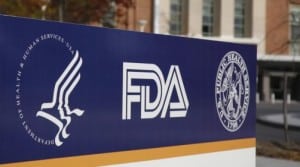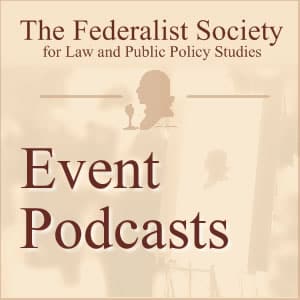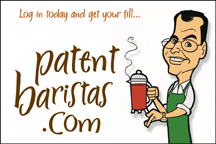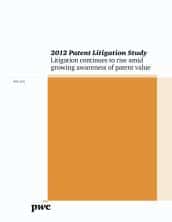Nobody ever goes home and says, honey, let me tell you about what I learned about patents today.”
~Charles Duhigg, New York Times reporter
Terry Gross of NPR’s Fresh Air program did a segment about patents today with an interview with Charles Duhigg, a New York Times reporter who recently wrote about the patent wars in the article “The Patent Used as a Sword,” co-written with Steve Lohr. Duhigg is a reporter for the Times who is contributing to their current series on the iEconomy.
The episode focuses on the story behind Apple patents and how patents have become weapons in the wars between smartphone companies and the wars between start-ups and established high-tech companies.
Here’s an excerpt from National Public Radio:
Duhigg:
And we were trying to understand how to make sense of this, the fact that there are some people who can graduate from college, they go and they start the right company, and they get bought for a billion dollars within a couple of years, and thousands and thousands of other people who don’t have any jobs, who can’t find work even though they’re willing to work, they’re well-trained, they literally can’t find the jobs to absorb them.
[W]e really wanted to ask this question: What has happened to the economy? And what we found is it’s been a slow process, but the transition from an industrial to a digital economy is as transformative, as significant, not only for the economy but for people’s lives, how people do work and how people should think about their own work, as the transition was from an agrarian economy to an industrial economy 100 years ago.
Gross:
And what you’re finding is some of our laws and ways of doing business are really out of date, even though those laws haven’t changed, which leads us to patents. And I want to mention an astounding figure or two here. This is according to a Stanford University analysis that you quote. In the smartphone industry in the past couple of years, as much as $20 billion was spent on patent litigation and patent purchases.
That’s the equivalent of eight Mars Rover missions. Last year for the first time, spending by Apple and Google on patent lawsuits and unusually big-dollar patent purchases exceeded spending on research and development of new products.
Duhigg:
So the idea [behind patents] was to encourage innovation, but what’s happened, particularly in the last 15 years and in software in particular, in technology, is that rather than patents becoming something that encourages innovation, patents have become essentially a barrier, a toll gate on the road of innovation because patents have become so broad, so amorphous that if someone can get a patent on kind of a completely commonplace technology, what they can do is they can say to everyone else: Listen, if you want to invent this widget that you’ve invented on your own, that hundreds of people have invented at this point, I own the intellectual property on that widget. So I can stop you from using or selling that widget, or I can force you to pay me for it.
…
[T]he rise of smartphones was mirrored by the rise in the understanding by technology companies that they can patent almost anything, and their aggressive moves into pushing the patent office into granting them patents on almost any idea they could come up with.
In a discussion of Siri, the voice-recognition system that the Apple iPhone introduced last year:
Duhigg:
They just invented the concept, and that’s almost always true now. Companies come up with a concept, and they file the patent for the concept before they actually figure out and make the concept into a product, because it’s a race to the patent office. It’s a race to try and get your patent in there first.
The difference with the cotton gin is, Eli Whitney didn’t say I’m patenting every way to ever remove a seed from cotton. Instead what he said is, I’m patenting this machine, and you really can’t do that many variations on this machine.
Today you can say I’m patenting essentially a concept. I’m patenting essentially an abstract idea, and as long as I say it can happen on a computer, I own every application of that idea going forward for the next 20 years.
So if someone comes up with some application that you’ve never dreamed of, if someone comes up with – dreams up, for instance, Siri, a voice-recognition digital assistant, even if you never thought of that when you were writing the patent application, you now can claim ownership over it.
Gross:
So is this happening now, where somebody invents a way of doing something, like an application for devices, and they find out that they can’t do it because the concept has already been patented? The application didn’t exist, the way of doing it didn’t exist, but just the concept had been patented, and therefore this person can’t move forward with their application?
Duhigg:
Absolutely, that literally happens every single day. If you are now a startup in the digital space, as soon as your product becomes even moderately successful, you will get sued by someone who holds a patent on a concept that they say that you’re violating.
I’m not sure what to say about this since this is a generalization and it’s just not true. You cannot patent an idea. You can patent an invention, which is the concrete expression of the idea. Under U.S. patent law, all patents — whether for a smartphone or for a business method — are judged according to the same criteria as other types of patents. Patent applicants must show that the invention is new and nonobvious and applicants must describe the invention such that a person in the industry would know how to make and use the invention.
Much of the current controversy around patents has been because certain applicants have tried to patent ridiculously vague and suspect ideas for the sole purpose of initiating lawsuits.
Duhigg:
Now, there’s a counterpoint, which comes from a lot of people like, for instance, Judge Richard Posner, who’s a very well-respected federal appellate judge, or a paper that was recently published by the – a working paper from the St. Louis Federal Reserve, that says we don’t believe that patents are necessary.
We think that Apple, if they create, invent the iPhone, and they sell it, they’re going to make so much money on that even if other people can try and copy and imitate them, Apple will be well-compensated for all of its research and development.
Now, Apple makes about a billion dollars a week on iPhone sales, maybe even more now that the iPhone 5 is out, we don’t know the latest numbers. And what Richard Posner would say is, look, if you’re making a billion dollars a week, you have earned back the cost of inventing the iPhone many times over.
I realize this sounds good in a vacuum but there is nothing in patent law that says you can only make back a certain return on the “inventing” of your product. Without taking into account all of the “inventing” that never becomes a product, how could this ever be determined? Besides, the cost o inventing is not necessarily proportional to the invention. One person could spend 10 years and 10 million dollars working on an idea and never develop a working invention. Another person could spend 10 days and $10,000 and come up with something revolutionary. Money and invention are often related but they’re never tied together in any kind of formula.
I love NPR and (sometimes) the NY Times but I wish they’d talk to experts instead of reporters.
You can read the rest of the interview at NPR’s website, FRESHAIR.npr.org.







